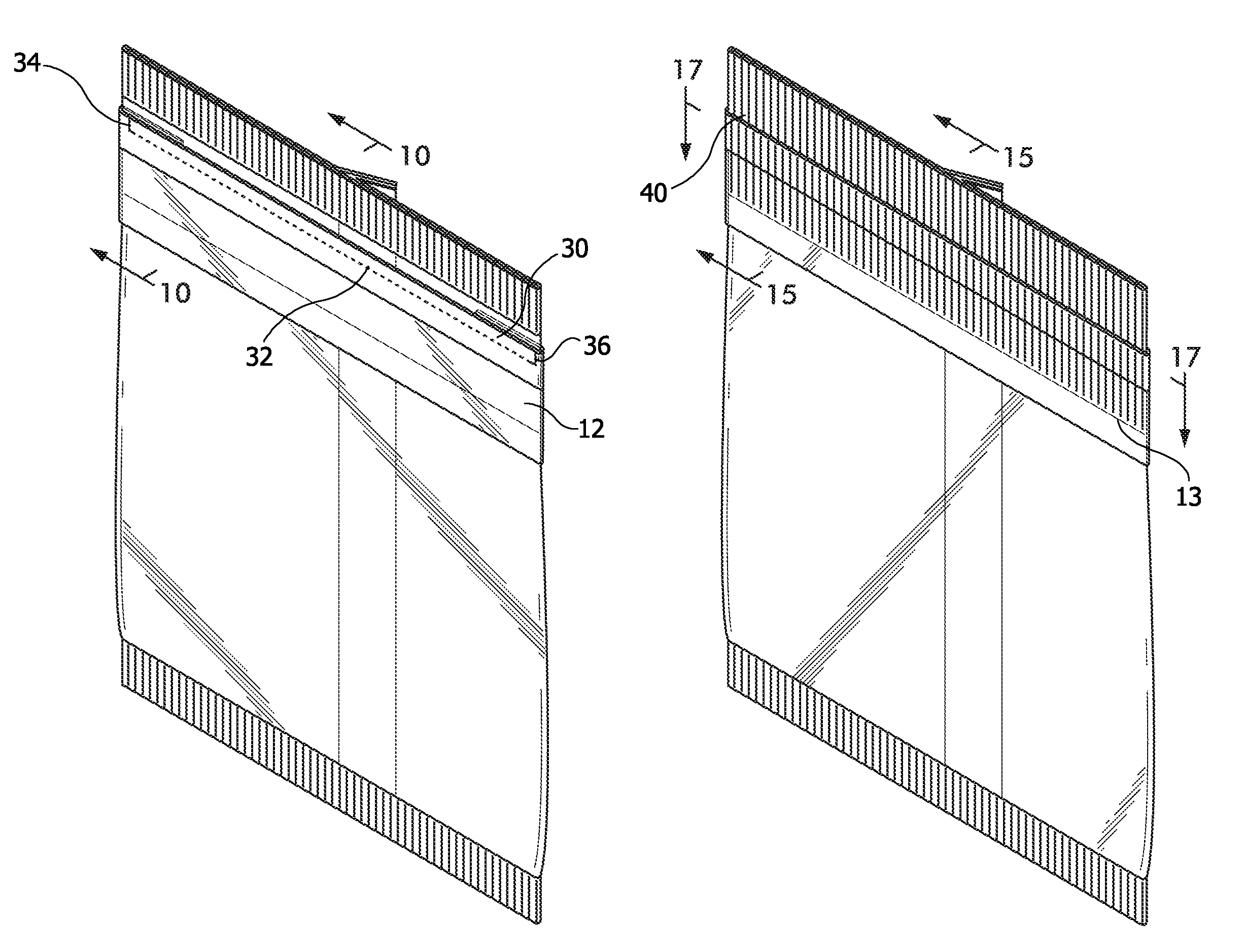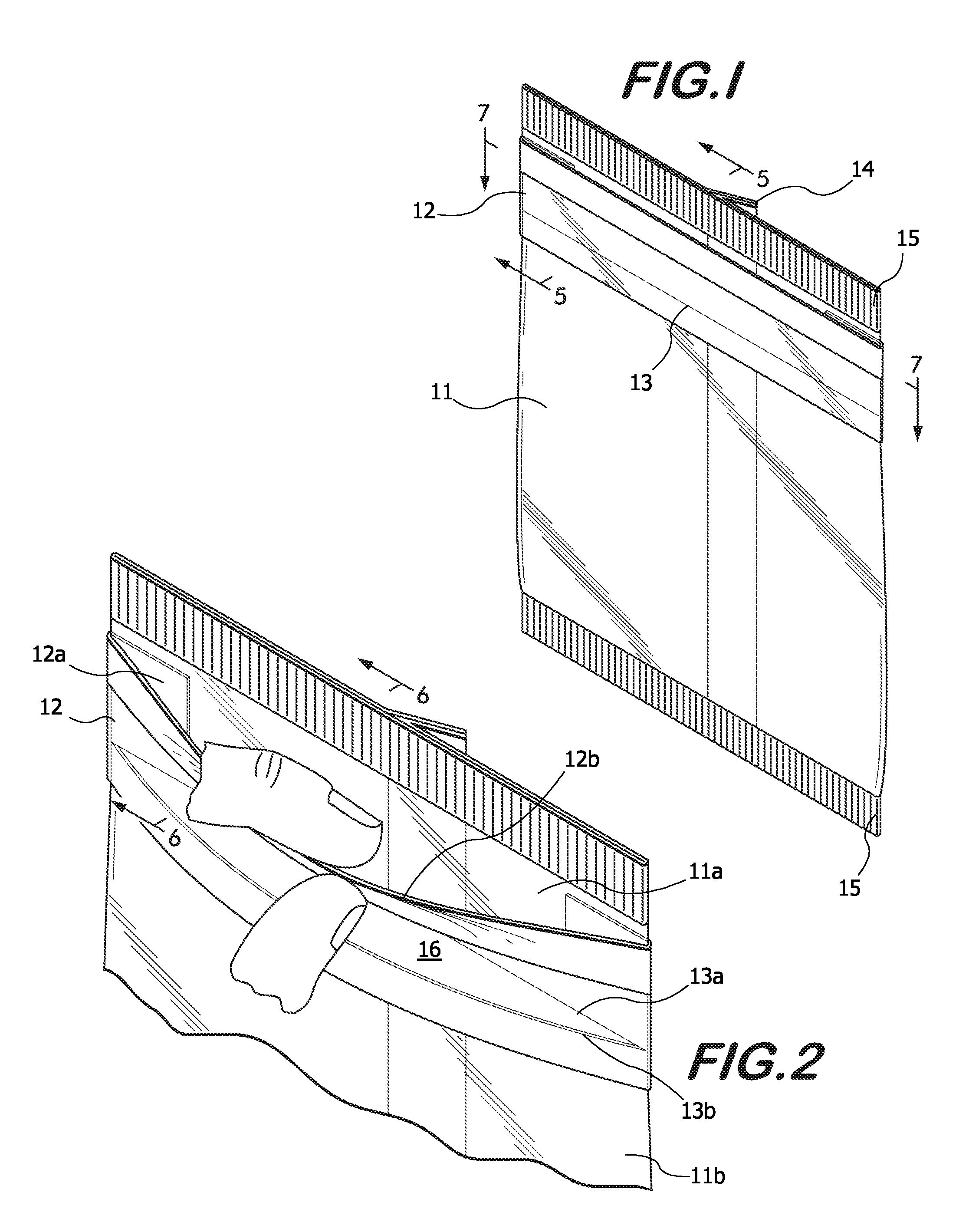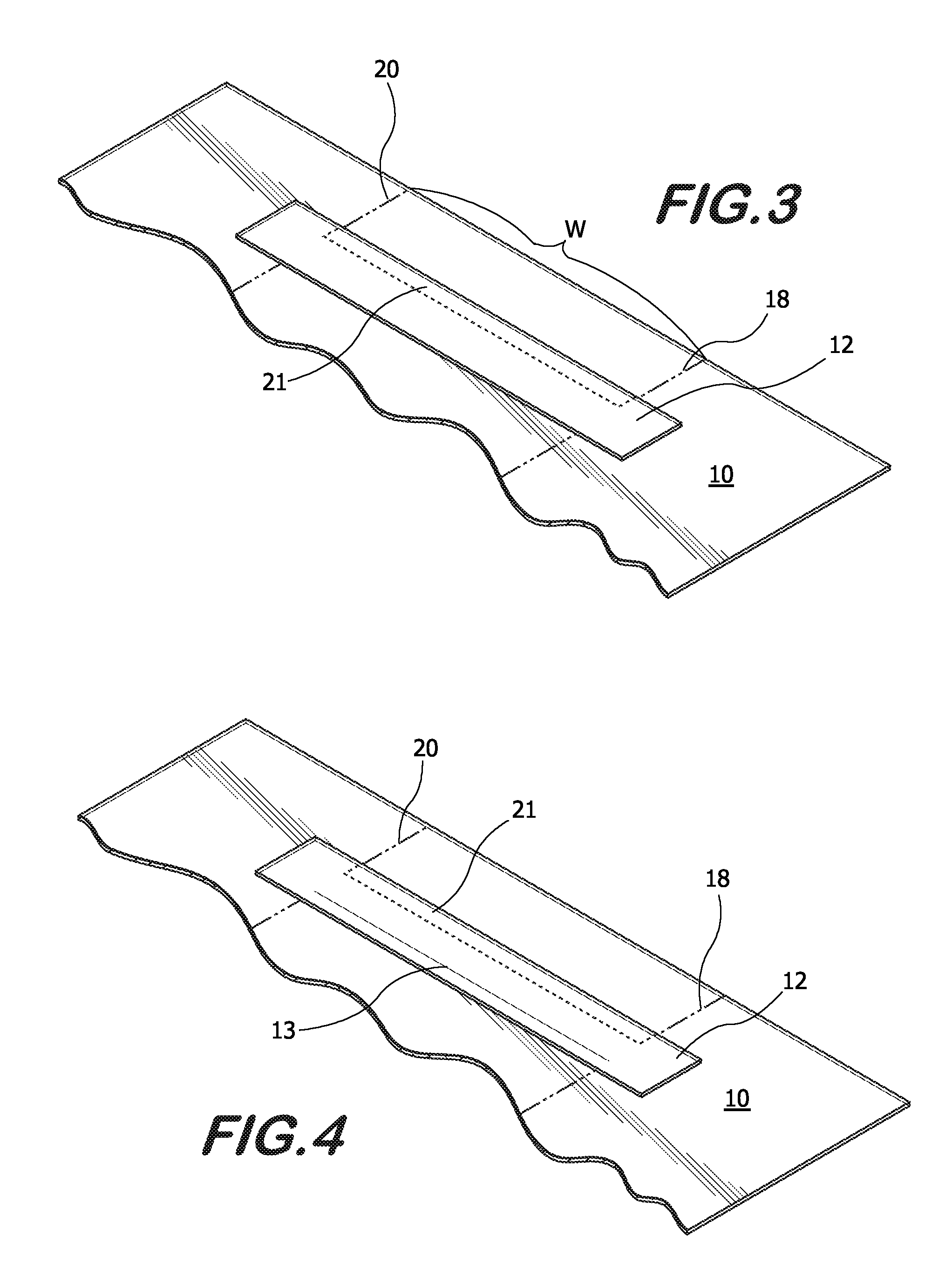Tape sealed reclosable bag
a reclosable bag and tape sealing technology, applied in the field of plastic bags and packaging systems with hollow-type plastic bags, can solve the problems of reducing the allowable amount of feed tension below, accumulating contents of the bag, and weakening film strength, so as to achieve less complicated web control mechanisms and high speeds
- Summary
- Abstract
- Description
- Claims
- Application Information
AI Technical Summary
Benefits of technology
Problems solved by technology
Method used
Image
Examples
Embodiment Construction
[0034]Referring now to FIG. 1, the completed package of the invention is shown. This embodiment and the others that follow are constructed of transparent materials so that the package contents can be seen. The basic structure of the packaging includes front panel 11 having a contents opening slit 13 that is covered by a reclosable tape segment 12. The tape 12 completely spans the front panel 11 laterally and wraps around side edges of the package to adhere to the rear panel. Front and rear panels are formed by folding plastic packaging film into a tube with lateral edges of the film heat welded along a longitudinal seam 14 at the rear of the package as well known in the art. Heat seal weld 15 at the top and bottom of the package complete its construction.
[0035]Referring now to FIG. 2, the package of FIG. 1 is shown being opened by manually grasping the top edge 12b of the tape 12 and pulling it forward away from panel 11. A slit 13 is defined by upper edge 13a and lower edge 13b and...
PUM
| Property | Measurement | Unit |
|---|---|---|
| adhesion | aaaaa | aaaaa |
| area | aaaaa | aaaaa |
| separation strength | aaaaa | aaaaa |
Abstract
Description
Claims
Application Information
 Login to View More
Login to View More - R&D
- Intellectual Property
- Life Sciences
- Materials
- Tech Scout
- Unparalleled Data Quality
- Higher Quality Content
- 60% Fewer Hallucinations
Browse by: Latest US Patents, China's latest patents, Technical Efficacy Thesaurus, Application Domain, Technology Topic, Popular Technical Reports.
© 2025 PatSnap. All rights reserved.Legal|Privacy policy|Modern Slavery Act Transparency Statement|Sitemap|About US| Contact US: help@patsnap.com



